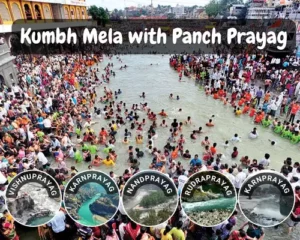KUMBH MELA WITH PANCH PRAYAG
The Kumbh Mela is one of the most significant and awe-inspiring religious gatherings in the world. Millions of people from all over India and beyond gather at this event. To take a holy dip in the river Ganges, seeking spiritual cleansing and renewal. And what better way to experience this incredible festival than with Panch Prayag? So get ready to immerse yourself in the magic of Kumbh Mela with Panch Prayag!
Introduction to the Kumbh Mela
The Kumbh Mela is a pilgrimage that takes place every three years. And is between four different holy sites in India. The site of the Kumbh Mela changes each year.
The Kumbh Mela is in Hindu scriptures dating back over 2000 years. During a battle between the gods and demons, some drops of amrit fell from the sky and landed on earth. It fell at four different places: Allahabad (Prayag), Haridwar, Ujjain, and Nasik. The Kumbh Mela is held at these four sites in rotation. With Allahabad hosting the mela every 12 years.
During the Kumbh Mela, pilgrims come from all over India to take a dip in the holy waters of the river. It cleanse them of their sins and allow them to attain moksha (liberation from the cycle of rebirth). The Kumbh Mela is also a time for spiritual reflection and religious study, as well as a time to socialize and enjoy traditional music and dance.

History of the Kumbh Mela
During the battle between the devas and asuras for amrita, or the nectar of immortality, four drops fell on earth at Prayag (modern day Allahabad), Haridwar, Ujjain and Nasik. These are now the four sites where the Kumbh Mela celebrates, in a cycle of every 12 years.
The Kumbh Mela is in various ancient texts and scriptures, including the Vedas, Ramayana and Mahabharata. In more recent history, the Kumbh Mela was first recorded by Chinese traveller Xuanzang in 640 CE, who described it as a “great assembly of monks”.
The Kumbh Mela became popularity under Emperor Akbar. Who designated it a holy event and decreed that land should be allocated for its celebration. This helped to ensure that the Kumbh Mela became an annual event, held every year at one of the four sites.

